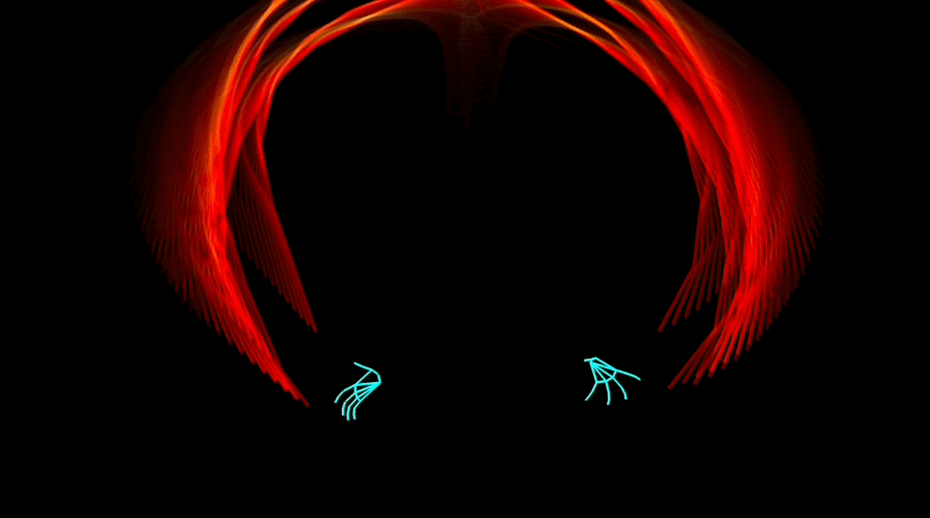hi Ryan,
Thinking along the same lines I made a quick fixer with Text Parser and similarly thought about JavaScript. I will check out your offer though, and appreciate that we might return to the stripped iteration of the actor in future releases.
Best wishes
Russell
I can confirm this is a know issue, I have documented recently.
I suspect we will return this to the previous behaviour.
I made a User Actor that can handle this in a backward compatible way, so you we don't need to remove it again in the future when the issue is fixed.
dx-strip-quotes-from-json-parser.iua4
Could have done the same thing with JavaScript, but 'maybe' its lighter weight with native actors.
Hi,
Just wanted to know if it is intended for the quotation mark delimiters to be stripped from the output parameters of the Json Parser?
In Isadora previously and including 4.0.9 the quotation marks were stripped at the output of the Json Parser actor as seen in this screen grab:

When I use the same in 4.1.3 the quotation marks appear as delimiter at the output:

Unfortunately this has rendered a number of my projects dysfunctional so I am wondering if this is the new norm or something that will revert back to previous versions?
Best Wishes,
Russell
Thanks for sharing. Love to see what artists are doing with Isadora features.
Like you, I have had a lot of fun with MediaPipe in Isadora. It is remarkable how accurate and stable the tracking is and it is not too bad at dealing with occlusion issues. My next step is using a thermal or infrared camera system so that the interactivity makes sense in a blackbox/low light performance setting. MediaPipe is really effective with available light cameras as long as there is lots of light - I am looking for a solution for this that works with theatrical/performance lighting that is a lot more subtle. My debut performance with this tracking was a 'cats cradle' game. During intermissions members of the audience at an outdoor film festival could play with virtual strings between their fingers while the Isadora stage was projected onto a giant mango tree next to a large cinema screen. The low latency and accuracy made for a fun audience experience. My only issue was having to light the participant enough to get good tracking and then this lighting interfering with the participant observing the projection - for the onlookers it worked really well. Projection always seems to work better when you can mitigate control and limit other light sources.

This screengrab matches Pythoner MediaPipe with Isadora's 3D Ropes actor module and a Motion Blur. I really appreciate the output effect of this with the physics of the 3D Ropes creating a very responsive live dynamic.
I just wanted to share the success I’ve had using Isadora’s ‘Pythoner Actor’ with MediaPipe (segmentation and pose landmark detection) and any decent camera feed (in my case an iPhone) to track individual body parts (up to 33). Also, by using its segmentation output with the ‘alpha mask’ actor, I’m able to add textures to the segmentation, or place the alpha mask output to any background.
It’s been great fun and has founds its way into my interactive stage work.
William
Isadora: 4.1.3 (arm)
Chip: Mac Studio M2 Max
Mac OS: Sequoia 15.1.1 (24B91)
iPhone 13 Pro
iOS 18.1.1
Also, on the topic of time-code, perhaps this bundle of add-ons will be useful to you.
I have had growing connectivity issues with my focusrite Clarett pre8, but It is stable at the moment when wired into a desktop setup. The unit is a bit older now and has a Thunderbolt 2 interface. I assumed that some of my issues were a result of having to use converter dongles and docking devices to use the Thunderbolt 2 interface with current types of connectivity. When the interface is physically connected but not connected in software, I go back to the focusrite control app and it is usually also not detected there either- at that point I try to restart everything. I did have some nasty noise coming from one monitor when using Isadora directly with the focusrite - which was a surprise - but I turned everything off and restarted and didn’t have another hint of it.
I have used Motu and Behringer interface before - some time ago - I was happy to leave the Behringer behind and have had less issues with the focusrite than I did have with the Motu.
I think it will be great when Isadora releases a major audio update.
Best wishes
Russell
As usual, you out do yourself. That is a fascinating list of TC actors.
I can see myself using one or two of them already.
A lot cleaner than my set up.
Many thanks.
eamon
@gaspar said:
even when Native drivers
That sounds like a very positive change. I am surprised that wasn't the case before, perhaps the drivers became corrupt of something.
I have found that occasionally I can introduce audio crackles if I am using virtual audio cables, and my sample rates aren't matching between the virtual cables and my audio device. I would also ensure you have a clean USB connection with a trusted cable.
In studio I use a Roland Rubix 24 (much like a scarlett 24), and it has been stable.
@simon100 I found some more of my timecode things (this time more patches than User Actors). Maybe some will be helpful for your project.